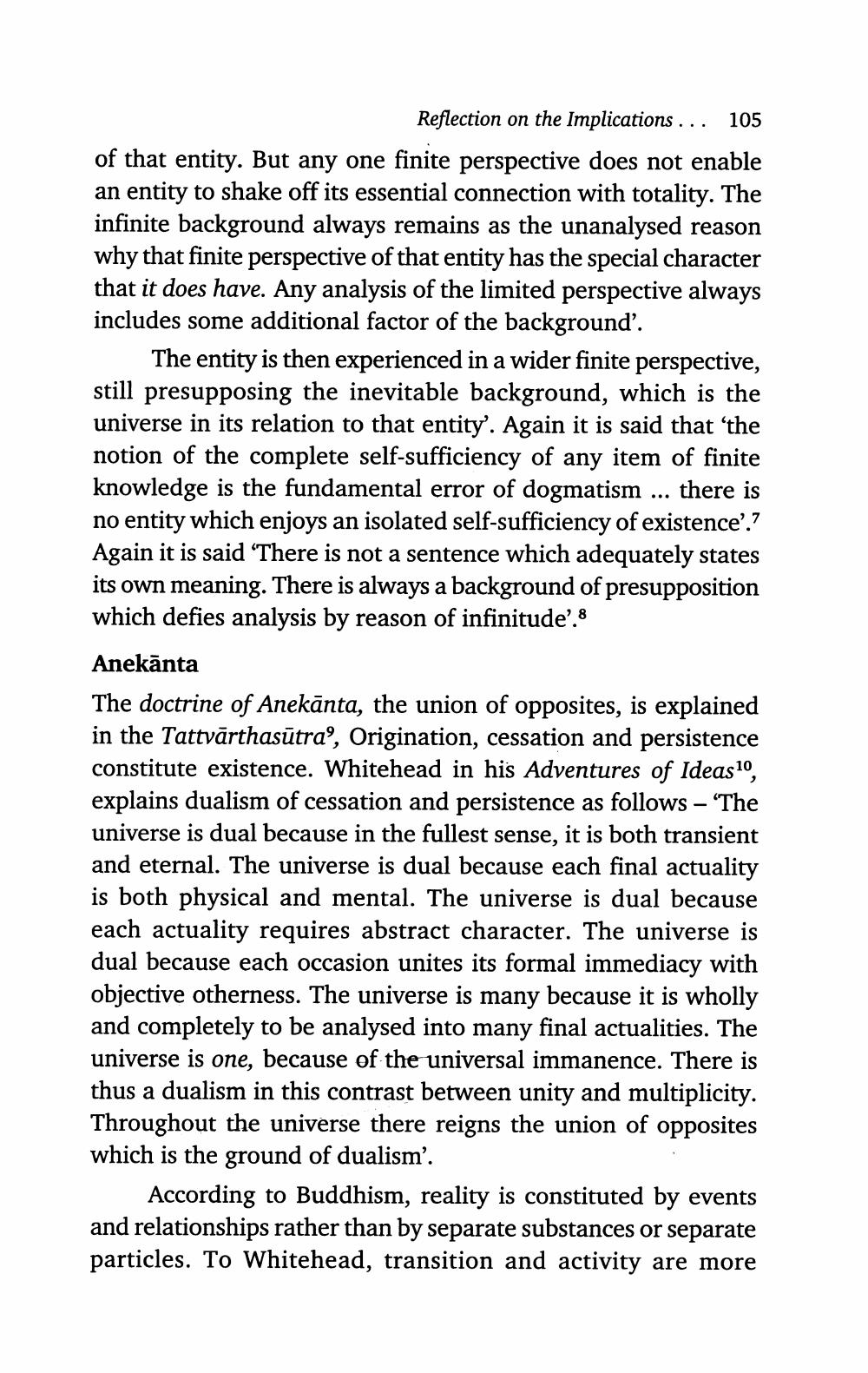________________
Reflection on the Implications... 105 of that entity. But any one finite perspective does not enable an entity to shake off its essential connection with totality. The infinite background always remains as the unanalysed reason why that finite perspective of that entity has the special character that it does have. Any analysis of the limited perspective always includes some additional factor of the background'.
The entity is then experienced in a wider finite perspective, still presupposing the inevitable background, which is the universe in its relation to that entity'. Again it is said that 'the notion of the complete self-sufficiency of any item of finite knowledge is the fundamental error of dogmatism there is no entity which enjoys an isolated self-sufficiency of existence'.? Again it is said "There is not a sentence which adequately states its own meaning. There is always a background of presupposition which defies analysis by reason of infinitude'.8
Anekanta
The doctrine of Anekānta, the union of opposites, is explained in the Tattvärthasūtra', Origination, cessation and persistence constitute existence. Whitehead in his Adventures of Ideas10, explains dualism of cessation and persistence as follows - "The universe is dual because in the fullest sense, it is both transient and eternal. The universe is dual because each final actuality is both physical and mental. The universe is dual because each actuality requires abstract character. The universe is dual because each occasion unites its formal immediacy with objective otherness. The universe is many because it is wholly and completely to be analysed into many final actualities. The universe is one, because of the universal immanence. There is thus a dualism in this contrast between unity and multiplicity. Throughout the universe there reigns the union of opposites which is the ground of dualism'.
...
According to Buddhism, reality is constituted by events and relationships rather than by separate substances or separate particles. To Whitehead, transition and activity are more




